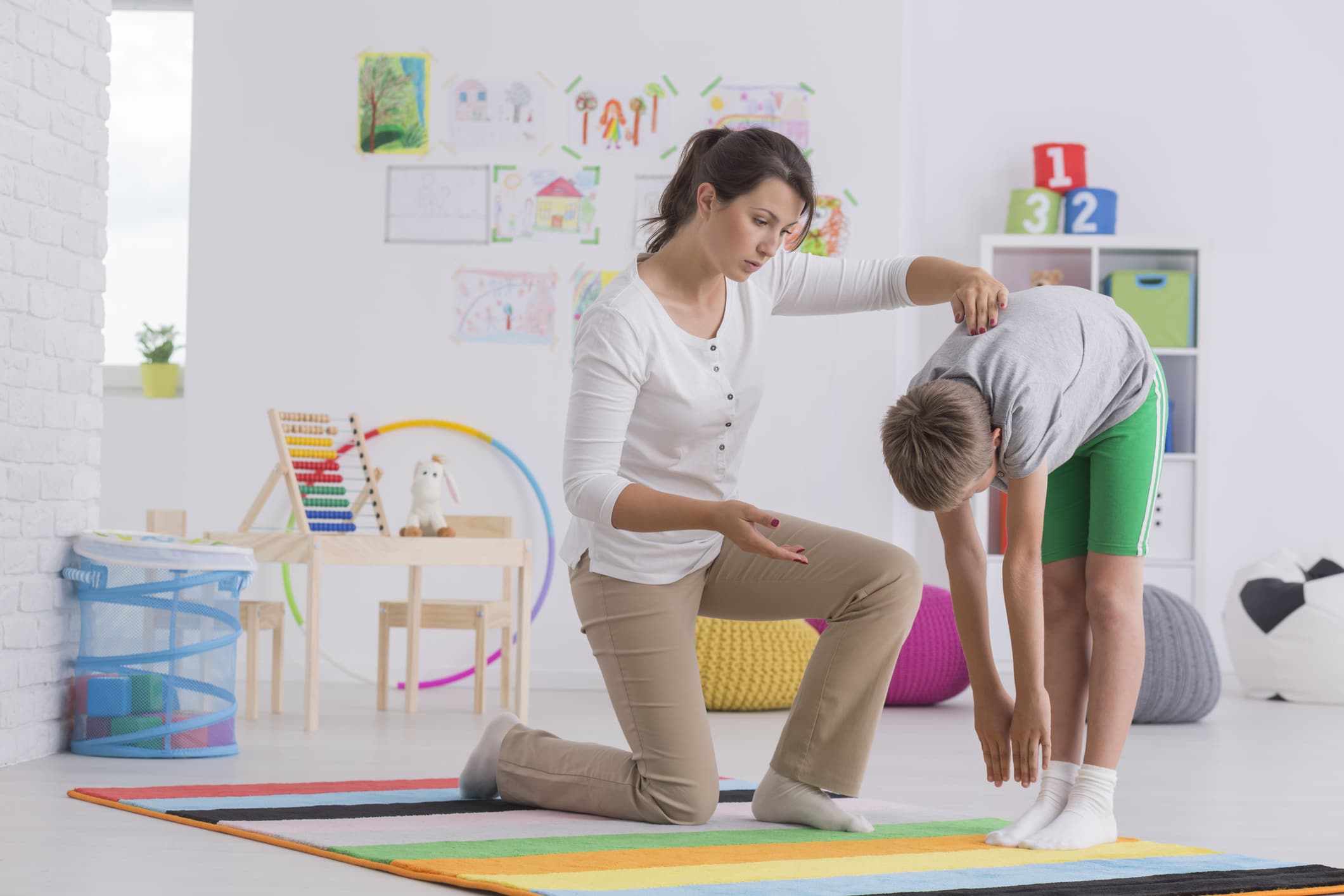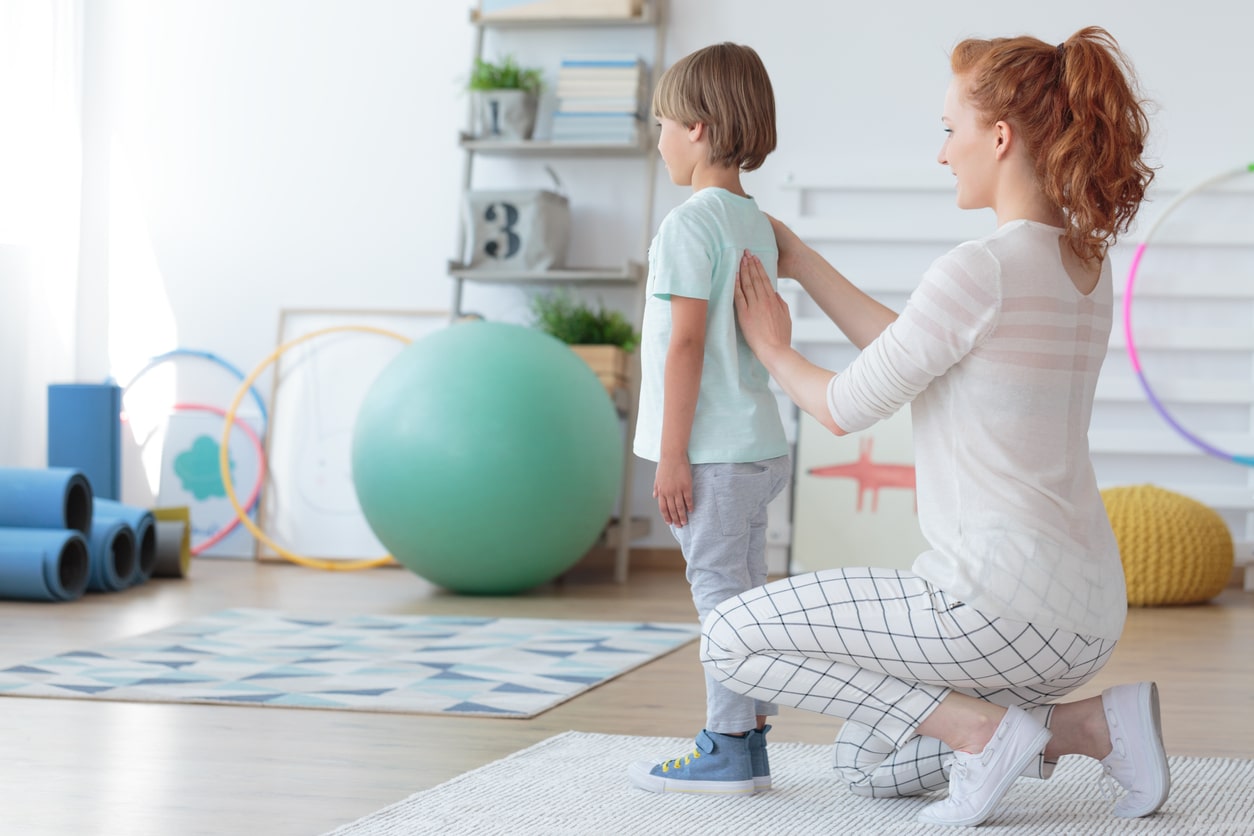Pediatric Scoliosis
Scoliosis, a medical condition characterized by an abnormal lateral curvature of the spine, affects individuals of all ages, but children are particularly susceptible due to their growing bodies. Physical therapy has emerged as a valuable non-invasive treatment option for managing scoliosis in children, offering a range of benefits that contribute to improved quality of life and spinal health.
Get Treatment Now

What is Scoliosis?
Scoliosis occurs when the spine deviates from its normal alignment, taking on a distinctive “S” or “C” shape when viewed from behind. This curvature can result from various factors, including genetics, muscle imbalances, neurological conditions, or underlying medical issues. While scoliosis can affect individuals of all ages, it is often most noticeable and progressive during the rapid growth period just before puberty.
Common Symptoms of Scoliosis in Children
Recognizing the signs of scoliosis in children is crucial for early intervention and effective management. Parents, caregivers, and educators should be vigilant for indicators such as:
- Uneven shoulders
- Asymmetrical waistline
- One hip appears higher than the other
- Tilted or leaning posture
- Noticeable curvature of the spine when bending forward (Adams Forward Bend Test)
- Back pain or discomfort, particularly after extended periods of sitting or standing
- Reduced range of motion and flexibility in the spine
- Uneven rib cage or protruding ribs on one side
How Does Scoliosis Impact Children?
Beyond physical appearance, scoliosis can have a significant impact on a child’s physical and emotional well-being. As the spine curves abnormally, it can cause muscle imbalances, restricted mobility, and discomfort. In more severe cases, the curvature might affect the internal organs, including the heart and lungs, potentially leading to respiratory and cardiovascular issues. Children with scoliosis might also experience self-esteem issues due to their altered physical appearance.

The Benefits of Physical Therapy for Scoliosis in Children
Physical therapy offers a holistic approach to managing scoliosis in children, focusing not only on the spine’s curvature but also on the child’s overall health and development. The advantages of incorporating pediatric physical therapy into the treatment plan for scoliosis are multifaceted.
Improved Posture
Physical therapists work closely with children to address postural abnormalities. Through a combination of exercises, stretches, and posture correction techniques, children learn how to maintain a more aligned and balanced posture. This not only reduces strain on the spine but also helps slow down the progression of the curvature.
Enhanced Muscle Strength
Weak muscles can exacerbate the effects of scoliosis. Physical therapy involves targeted exercises that strengthen specific muscle groups, helping to support the spine and alleviate the pressure caused by the curvature. Improved muscle strength contributes to better spine stability and overall body mechanics.
Better Respiratory Function
Severe spinal curvature can compromise the space within the chest cavity, restricting lung expansion and hindering respiratory function. Physical therapists employ exercises and techniques that focus on improving lung capacity and breathing mechanics. By enhancing respiratory function, children can enjoy better overall health and increased energy levels.
Increased Flexibility
Flexibility exercises play a crucial role in physical therapy for scoliosis. By enhancing flexibility, children experience greater freedom of movement and reduced muscle tension. Increased flexibility can lead to improved comfort and reduced pain associated with scoliosis.
Prevention of Curve Progression
While physical therapy may not completely reverse scoliosis, it can effectively slow down the progression of the curvature. Regular physical therapy sessions enable close monitoring of the spine’s condition and the implementation of strategies to prevent further deterioration. This can be particularly beneficial during the crucial growth phase in children.
Reduced Pain and Discomfort
Scoliosis-related pain and discomfort can significantly affect a child’s quality of life. Physical therapy incorporates techniques such as manual therapy, massage, and targeted exercises to alleviate pain and enhance overall comfort. By addressing pain, children can engage more actively in daily activities and experience improved emotional well-being.
Physical Therapy for Scoliosis with Circle of Care
If your child is facing the challenges of scoliosis, remember that they don’t have to navigate this journey alone. At Circle of Care, we are dedicated to providing exceptional physical therapy services tailored to the unique needs of children with scoliosis. Take the first step in supporting your child’s well-being by scheduling a consultation with our experts. Contact us today to get started.
